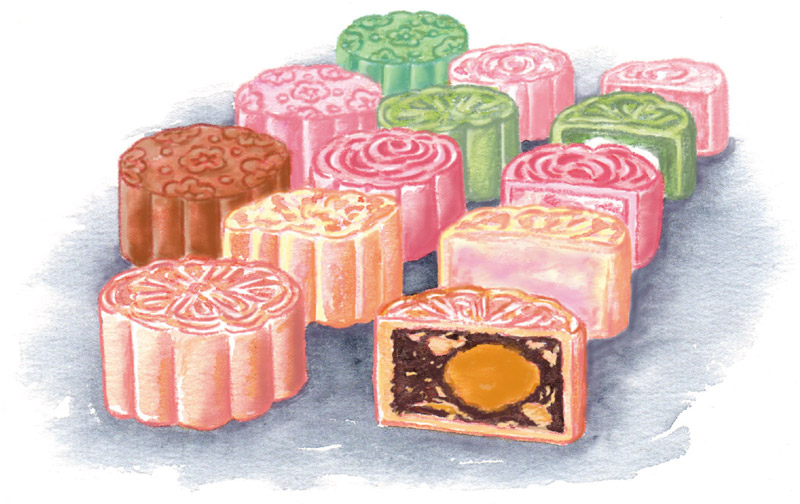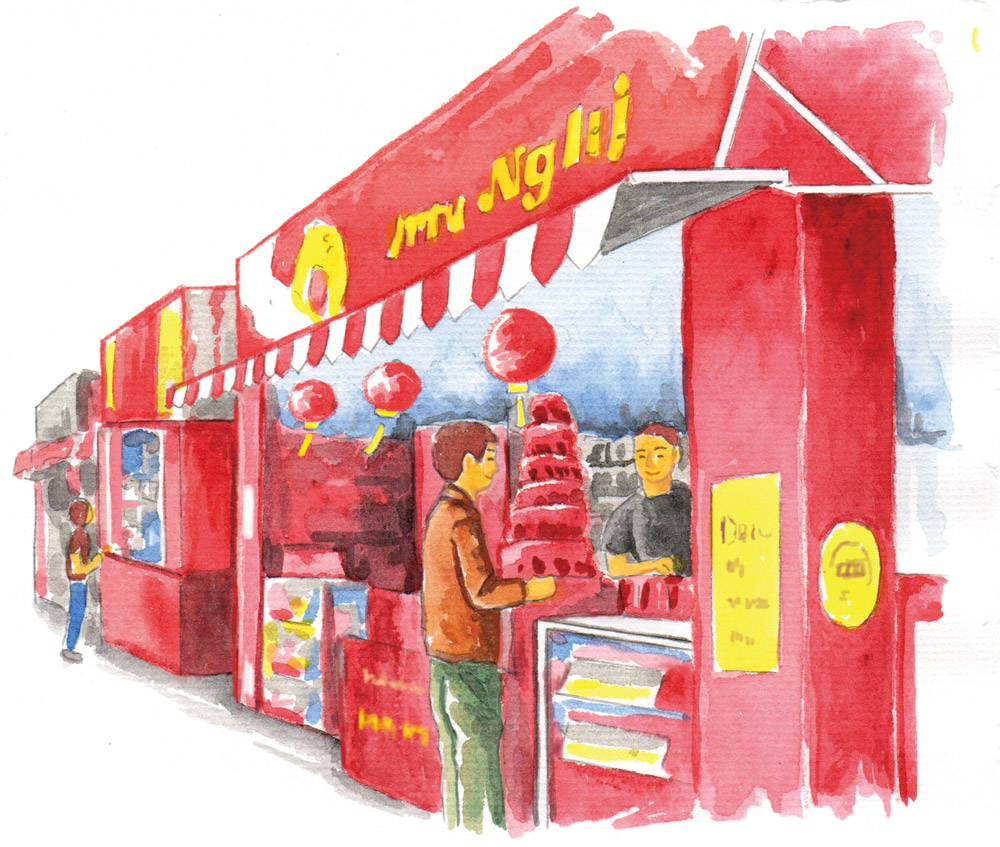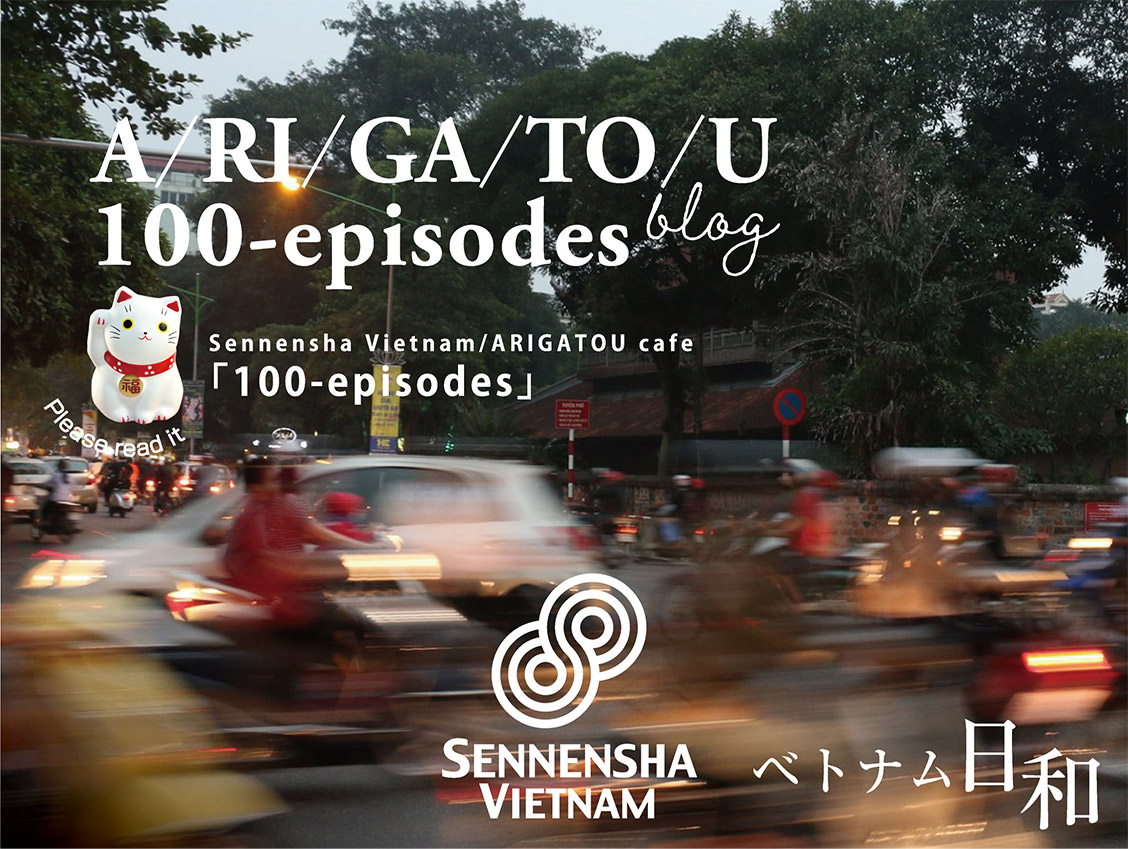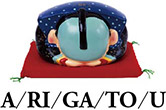episode-13
Vietnamese mooncake collab with kakigori.
Looking forward to Hanoi 100 years later.

This calendar is like a jewelry, precious metal store’s calendar. In Vietnam, it seems that it is customary to buy gold in the lunar new year, especially on the 10th day of the first lunar month. On that day, people lined up very excitedly in front of the jewelry store.
It’s a Vietnamese calendar.
Bronze-red (#e8380d) and gold. The impact of this calendar is incomparable to that of
Japanese calendars.
How did people try to comprehend the earth and space by looking at the moon,
stars and the sun? The calendar was one of the ways.
Nevertheless, it is quite flashy and has a great impact. The top part says "Prosperity" (rokku). In Japanese it is read as (roku), but in Vietnam it is read as (rokku).
When I asked if the word "Fortune, Prosperity and Longevity" (Fuku Roku Jyu) is in Vietnamese, there is "Phuc Loc Tho". There is also a Budai in Vietnam. I have seen a lot of large-bellied Budai pottery for sale on the street. It is called "Phat Di lac".
I have seen a lot of large-bellied Budai pottery for sale on the street. It is called "Phat Di lac".
A figurine of the zodiac tiger is placed. The real thing is, of course, gold. It is said to be a figurine that symbolizes wealth, success, and power.
“Mid-Autumn Festival.” It's "Trung thu" in Vietnamese.
This is an annual moon viewing celebration held on the 15th day of August, of the
Japanese lunisolar calendar.
In Japan, it is called “Jugoya.”
It is a festival in gratitude for the rice harvest.
At this time of the year, stores like those in the illustration appear on the streets
of Hanoi.
Red and yellow stores make the city of Hanoi feel festive.
What are they selling? Mooncakes.
At this time of the year, it is a customary in Vietnam to go around with mooncakes and greet people who have helped you on a daily basis. Although Japan also has mooncakes, the Vietnamese mooncakes are larger and have a more luxurious and dignified feel to them.
I tried them, they were fantastic! I could eat 3 of them in a row.
“Really?” Maybe you will think so. But there is a touch of flavor to the sweet bean paste.
Also, there are salted quail eggs in them as well.
The saltiness is exquisite. The bean paste is a mix of various Vietnamese specialty ingredients.
The mooncakes here are different from the ones in Japan, in both taste and texture.
Also, there are various kinds to choose from.

This cake is thicker than the Japanese moon cake. Take a big bite and chew. The thickness and feeling when eating makes the delicious taste doubled.
50 or 100 years later...
A street corner in Hanoi.
You can see a table next to the store selling the mooncakes in the illustration.
On top of it is an open yellow parasol.
Vietnamese people are eating something.
“It's delicious!”
Kakigori. They are eating Kakigori with mooncakes filled with sweet bean
paste.
“Who came up with it?”
In the past, a Japanese man came to Hanoi and sold Japanese Kakigori.
He loved the red bean paste in the mooncakes, so he decided to collaborate the paste with his Kakigori.
It's still hot in Hanoi in mid-September, which is why people in Hanoi started to eat the Kakigori. I heard that they are now using this bean paste to sell with Kakigori in Japan as “Trung thu”.
In the last episode, we introduced customer service.
At ARIGATOU Cafe, we aim to be No.1 in Hanoi with our customer ser vice, products, and 5S. This time we focused on products.
We are currently researching the paste for the mooncakes. We would like to debut the
new product as "Trung thu" during the Mid-Autumn Festival next year.
I am looking forward to 50 and 100 years from now. When I look at the calendar, for
some reason, I see a small picture of Kakigori on the 15th day of the August on the
lunar calendar.

Yellow red gold, and yellow.
The landscape of the streets of Hanoi changed overnight.





 Prev
Prev
